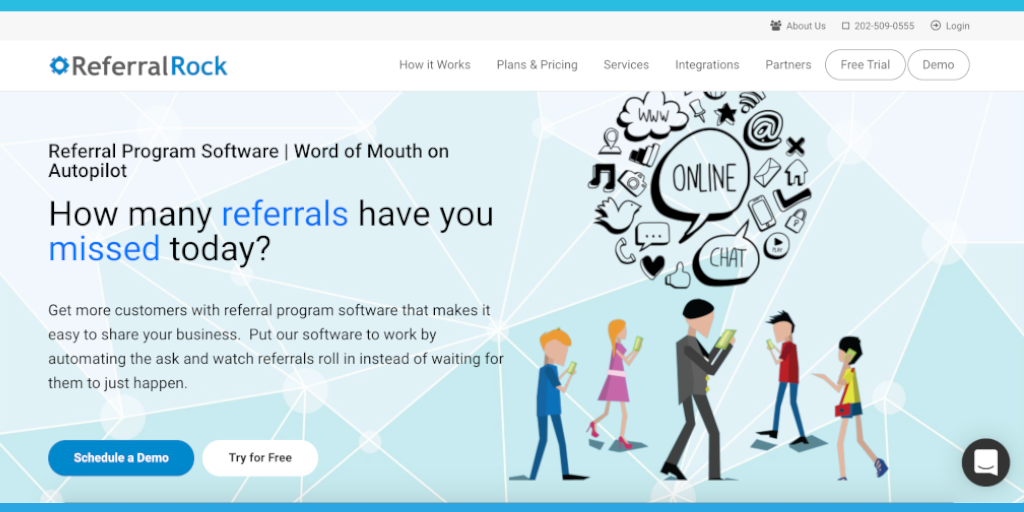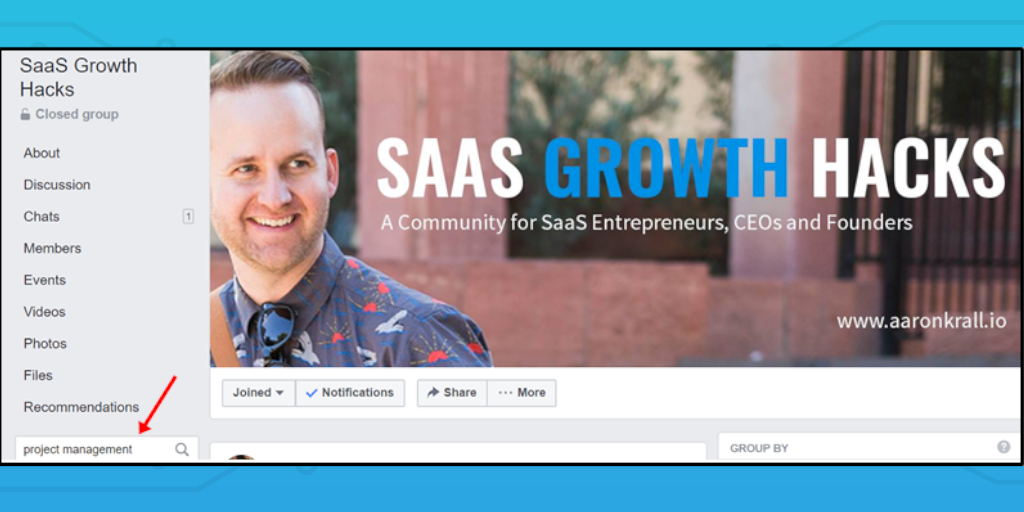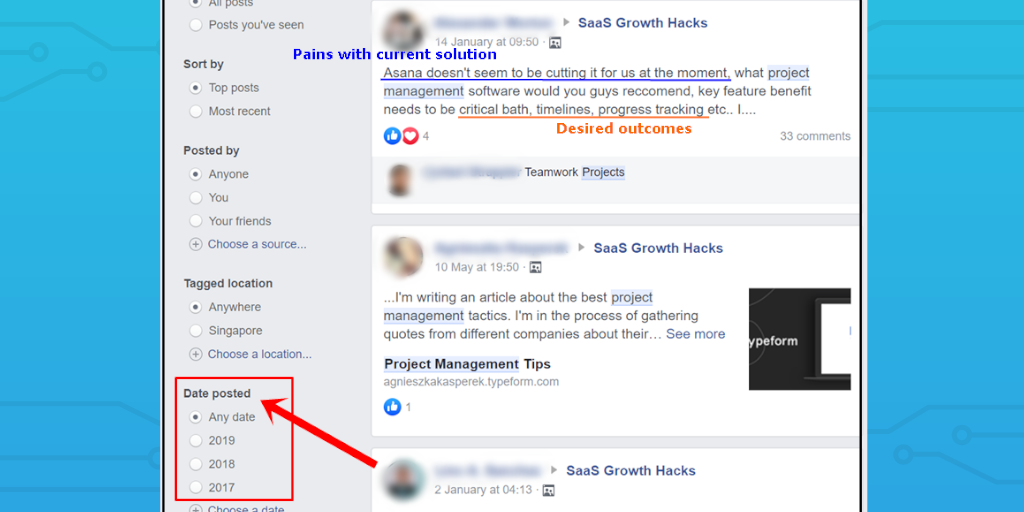
The following is a guest post by Priscilla Tan, a freelance content marketer for SaaS and Tech companies that care about making small businesses successful. Certified by SmartBlogger, her works have been spotlighted on places like Forbes, Inc Magazine, and CNBC Make It.
Did this happen to you?
You spent brutal months building your product solely based on your gut.
In a bid to keep your head in the game, you assured yourself, repeatedly, that success is just around the corner.
And yet, when you released your product to the public… it tanked. Sure, you had a few sign-ups, but no one stuck around.
As you slumped your shoulders in defeat, you questioned yourself, what went wrong?
You tweeted for help, hoping to find comfort. And you did. In fact, your tweet even went a little viral.
Founders, developers, and marketers in the SaaS space flocked in to share similar experiences. You read every single one of them, nodding your head along to their demoralizing tales.
Then… horror struck.
It hit you: you built your product based on false assumptions. And so did they.
Just as you were about to close Twitter, you stumbled on this tweet and it straight up punched you in the gut:

And there it is, the guilty culprit of unsuccessful products: the lack of customer research.
What is customer research?
Customer research is different from market research. It’s the heart of your business.
It involves asking your customers questions on an ongoing basis, so you can better understand their actual needs and better predict at what they will do.
To quote Roy Olende in the Buffer blog, it helps you close the gap between what you know and what you think you know.
Customer research is a big deal
Companies that actively conduct customer research enjoy a 55 percent higher retention rate and grow their annual revenue by 48.2 percent than those that don’t.
Customer research helps you figure out if there’s demand for your product or features before you build.
Without it, you target the wrong marketing channels, build a misaligned content strategy, and write a blog post no one reads — and that’s only the best-case scenario.
The worst-case scenario? You build a product no one wants.
What you’ll learn in this article
You’ll discover the 5 ways to read your target customers’ minds and dive into their specific pain points, desired outcomes, and use cases through asking questions and mining reviews.
Before you do that, take a look at the 6 categories below. (Customer Camp founder, Katelyn Bourgoin, introduced them in her stellar webinar with Forget The Funnel.)
These 6 categories will guide you along as you highlight and save evidence for further analysis:
- Jobs-to-be-done
- Pains with current solutions
- Desired gains or outcomes
- Buying objections/criteria
- User stories
- Swipeable quotes or ideas
If you’re scratching your head, don’t worry! These are several real-life examples peppered in this article to help you in this process.
Let’s begin.
How to do customer research: the 5 ways to read your target customers’ minds
1. Attend Q&A-focused events
Rand Fishkin is a fan of this strategy.
In his book, Lost & Founder: A Painfully Honest Field Guide to the Startup World, the founder of SparkToro and previously co-founder of Moz and Inbound.org (now Growth.org), advocates attending events as they “offer a wide range of experiential cases from which you can gain perspective and insight.”
He’s right.
Events are the best places to be at when you want to better understand the crux of their problems.
Your target customers are attending events to learn from established experts and their peers, so they can solve the problems they face in their businesses.
Here’s how you can start.
Visit event listing sites (e.g. Peatix, Eventbrite, Facebook Events) and take note of the agenda and learning outcomes. These give you clues at what your target customers care about.
Like this:

If you’re using Facebook Events, check out the ‘Going’ and ‘Maybe’ list to learn more about the attendees’ background.
Here’s what you want to do: focus on events with Q&A sessions and networking opportunities. Why? Because both put the spotlight on your prospects.
Jot down the most repeatedly asked questions during Q&As.
For example, take a look at the questions below:
- “Are carousel ads better than single image ads?”
- “Where can I find more examples besides AdEspresso?”
- “I have a brand new Facebook page. Should I go for CPM or CPC?”
- “What’s the best audience size?”
- “What’s a custom audience?”
If you notice questions like these constantly popping up during Q&As, this tells you two things: your target customers care about Facebook Ads and need more help in this area.
With insight like this, you can create new content, like a beginner’s guide on Facebook ads. Or add new features to your product.
When you network, avoid asking leading questions (e.g. ‘You like your iPhone and use it a lot, right?’).
Instead, ask open-ended questions. A simple one like “What brings you to this event?” helps you uncover unexpected information on your target customers.
Not a fan of events? Webinars work too.
2. Ask questions in your sales demo
You’re not only selling your product in your demo. You’re identifying your prospect’s pain.
Here’s this strategy in action by a SaaS startup.
Referral Rock is a referral marketing software based in Washington, D.C.. In an interview with Indie Hackers, Josh Ho, the founder and CEO, shared his frustration with using text chat for customer support.
One day, Ho got so impatient with the slow-going process of the “single-threaded nature of the conversation” that he asked his customers if they wanted to do video calls so he could help them faster and more effectively.

This subtle change transformed his business for good. Referral Rock soon quadrupled its trial-to-paid conversions and grew into a $70K/month startup.
Why did it work? Ho began to understand what his users were looking for when they shared their struggles and suggestions. Talking to users directly accelerated Referral Rock’s growth.
Consider Ho’s strategy the next time you conduct a sales demo for your target customers. Before you do that, set up a form on your website for customers to schedule a 15 to 30-minute demo call.
As you head into the call, focus on the customer’s needs. Identify their pain and then qualify if your product is a fit to solve it (e.g. ask questions like “What kind of solutions did you try?”, “Why did it not work?”).
Tip: give these customers a heads-up the demos are being recorded. You want to transcribe the video to see how they phrase their words. This is incredibly powerful if you’re looking to rework your copy, like your sales or product’s feature page.
Don’t do sales demos? There are several alternatives. Go through your chat logs or support requests and talk to your sales team to figure out your customers’ questions and objections.
Pro tip: your sales team’s direct feedback can also help shape your bottom of the funnel content.
3. Ask this question in your welcome email
Welcome emails are 86 percent more effective than standard newsletters — they’re another no-brainer if you’re looking for an easy way to reach directly to your customers.
Here’s an example by Forget The Funnel. Forget The Funnel is a SaaS marketing workshop and training community founded by marketing veterans, Georgiana Laudi and Claire Suellentrop.

Notice the red box with the question: “What was going on that led you to sign up today?”
It’s an effective open-ended question that elicits a specific response.
Note: you can also use this question in your email subscription thank you page or customer messaging platform to get the most out of your subscribers and website visitors.
Include this question in your welcome email and embed a link to Typeform or Google Forms, so you can easily conduct further analysis.
This strategy may involve new customers, but that doesn’t mean you can’t use it for your target customers. For example, you can use these new responses in your sales copy to attract similar audiences.
What worked for your new customers will likely work for prospects.
4. Hunt on online peer review sites
Your target customers are using your competitors’ products and similar solutions like books, videos, and podcasts.
Start with review sites like Amazon, iTunes, Product Hunt, and G2 Crowd.
Let’s explore how this plays out in real life.
Say, you run a SaaS marketing software for small business owners. You could mine reviews of competitors like Hubspot and Autopilot, but don’t stop there.
You could also search for book reviews on Amazon. Or watch videos on YouTube and go through the comments. Or even look for the most followed question on Quora.
When you’re on sites like Amazon and YouTube, take note of the ‘Helpful’ or ‘Thumbs up’ button. The more helpful or thumbs up a review or comment has, the more you should pay attention to it.

Are you skeptical about this customer research strategy? Here’s a success story that might change your mind.
When Copyhackers founder, Joanna Wiebe, was working on a web copy for a rehab center, she picked 6 books on Amazon that covered the subject matter.
As Joanna was mining the reviews, she came across a quote that grabbed her attention, so much so that she knew she had a winner and turned it into the rehab center’s new headline:

The result of ‘If you think you need rehab, you do’?
It brought in 400% more clicks.
One last tip on mining reviews: take note of the language tone. If you notice reviews are written in a playful tone, you probably don’t want to use stuffy, formal language in your product messaging.
5. Spy in community-focused Facebook groups
Fret not, you don’t even need to go through the pain of starting a Facebook group.
Your action: pick a Facebook group where your target customers hang out.
Facebook groups that screen members (i.e. require answers for entry questions) and enforce community rules are great signs. Both signal a strong, engaging community with zero spam.
Let’s imagine you own a project management software and your target customers are project managers working in the SaaS space.
In this case, you want to join groups like SaaS Products & Marketing and SaaS Growth Hacks.

Go through the new posts every day.
If the posts aren’t within your niche and you require more data, type your keyword (in this case, ‘project management’) into the search box on the right-hand menu.
Play around with the filters. Sort results by top posts or select a new location.
As you go through the posts, jot down the most noteworthy questions and comments. Long threads are a goldmine for digging user stories and swipeable quotes.
Don’t be afraid to chime in if you require clarification. A question like “Hey [Name]. I’m curious to know more. What do you mean by [insert comment]?” could give you a new perspective on your product.

Tip: choose the most recent year to gather the most relevant, timely data.
Final words: do and apply customer research
Most companies fall into the trap of gathering and analyzing data from customer research, but not do anything about it. Don’t be one of them.
As you gather these important data on your target customers, organize them in the 6 categories shared above.
The results from your data can be applied in almost all areas of your business.
You can edit your headline in your homepage and a/b test it. Or add new features to your product. Or send relevant emails in your nurturing campaign. Or even update your FAQs page to address potential objections.
However and whenever you conduct your research, you want to make sure to use it.
If you feel overwhelmed, take a leaf out of Bourgoin’s book — start small. Block off 10 minutes a day in your calendar every morning.
If you’re new and time-strapped, pick your best channel and focus on that.
Over time, as you conduct research and implement actions based on the data you gathered, you’ll not only gain laser-sharp information on your customers.
You’ll also produce better content, enjoy higher conversions, and build an enduring business.
Which of these 5 customer research ways will you try in your business today? Do you have questions? Let us know in the comments below!







 Workflows
Workflows Projects
Projects Data Sets
Data Sets Forms
Forms Pages
Pages Automations
Automations Analytics
Analytics Apps
Apps Integrations
Integrations
 Property management
Property management
 Human resources
Human resources
 Customer management
Customer management
 Information technology
Information technology



Ben Mulholland
Ben Mulholland is an Editor at Process Street, and winds down with a casual article or two on Mulholland Writing. Find him on Twitter here.